Lulua Mother and Child Figure Returns to View
One of the African collection’s most famous, signature objects has recently returned to view in the first-floor galleries, after well over a year’s worth of travel around the country.
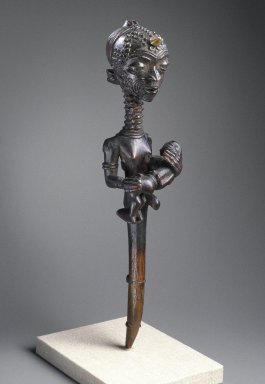
Lulua. Mother with Child (Luphinga Lua Limpe), 19th century. Wood, 14 x 3 3/8 x 3 1/2 in. (35.6 x 8.6 x 8.9 cm). Brooklyn Museum, Museum Collection Fund, 50.124
The Lulua mother and child figure (lupingu lua luimpe) was featured in the exhibition Art and Power in the Central African Savanna, which was organized by the Cleveland Museum of Art, and travelled to the Menil Collection, in Houston, and the M.H. de Young Memorial Museum, in San Francisco. The mother and child figure featured prominently, among an assortment of figurative sculpture from the cultures of the southern Congolese grasslands, including the Chokwe, Songye and Luba, in addition to the Lulua—art traditions that are all well represented in Brooklyn’s collections.
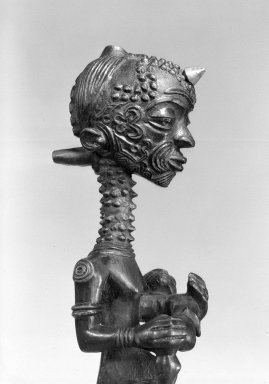
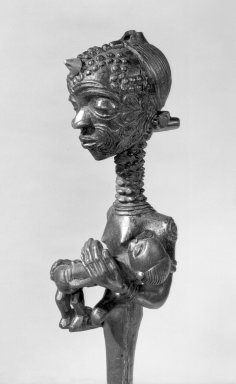
Lulua. Mother with Child (Luphinga Lua Limpe), 19th century. Wood, 14 x 3 3/8 x 3 1/2 in. (35.6 x 8.6 x 8.9 cm). Brooklyn Museum, Museum Collection Fund, 50.124
Lupingu lua luimpe figures such as this were used by a cult among the Lulua, called Bwanga bwa Cibola, which aimed to cure infertility. Women who were having trouble conceiving could be initiated into the cult, after which they would receive a lupingu lua luimpe figure, which was designed to ward off any ill intentions that might be directed her way. With incredibly elaborate, finely carved scarification patterns on the mother’s face, shoulders and back, and an otherworldly grace to her facial features, Brooklyn’s piece remains an unrivaled masterpiece.
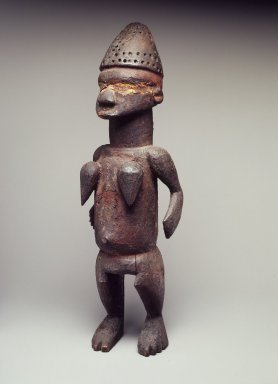
Salampasu. Standing Female Figure (Tulume), late 19th century. Wood, pigment, 14 3/16 x 4 5/16 x 3 9/16 in. (36 x 11 x 9 cm). Brooklyn Museum, Brooklyn Museum Collection, by exchange, and Designated Purchase Fund, 74.32
While the Lulua figure was making its way around the U.S., its place in the gallery was held by a Salampasu style standing female figure (tulume), from a neighboring cultural region. The face of this carved figure exhibits many of the same distinctive facial features found in Salampasu masking traditions. This figure’s hat, like masks from the region, may have originally held feathers. Whereas masks are used in public performance among the Salampasu, figurative sculptures are either privately owned or used in various religious cults. Tulume figures are quite rare, and since little research has been done among the Salampasu, hypotheses about the role of sculptures in this Central African culture remain highly speculative.
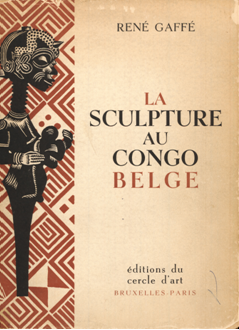
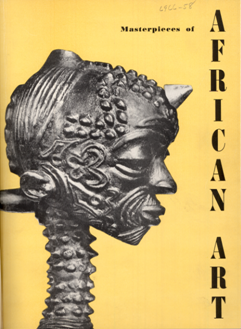
Left: René Gaffé. La sculpture au Congo belge. Paris: Éditions du Cercle d’Art, 1945. Right: Brooklyn Museum. Masterpieces of African Art (exh. cat.). New York, 1954.
The Lulua piece remains one of the iconic works of Brooklyn’s African holdings. (Indeed, while it has only traveled about once a decade, it has been published over 20 times – likely more.) While we were happy to share the work with new audiences in Cleveland, Houston and San Francisco, we are exceedingly pleased to have it back home.
For more on the Lulua mother and child, and other iconic works in Brooklyn’s African collection, consult our new catalog – African Art: a Century at Brooklyn Museum. William C. Siegmann (ed.), Kevin D. Dumouchelle and Joseph Adande. New York: Prestel, 2009.

Kevin D. Dumouchelle joined the Brooklyn Museum in 2007. He was promoted to Associate Curator for the Arts of Africa and the Pacific Islands in 2012, having served as Assistant Curator since 2008. In 2011 he conceived and curated African Innovations, the Museum’s first chronological and contextual installation of its African collection. He has also curated a number of exhibitions, and contributed to the writing and editing of a major catalogue of works in the African collection, African Art: A Century at the Brooklyn Museum, published by the Brooklyn Museum in association with DelMonico Books • Prestel in fall 2009. Dumouchelle has published on a range of topics, from architecture and canonical African sculpture to contemporary photography, and he has received numerous fellowships and awards. Dumouchelle earned an M.A. and M.Phil. in Art History and Archaeology from Columbia University, where he taught art history and is completing his Ph.D. He has pursued research in Morocco, Mali, and Ghana, and is the recipient of a first-class Master’s degree in history from Oxford University and a B.S. in Foreign Service from Georgetown University.
